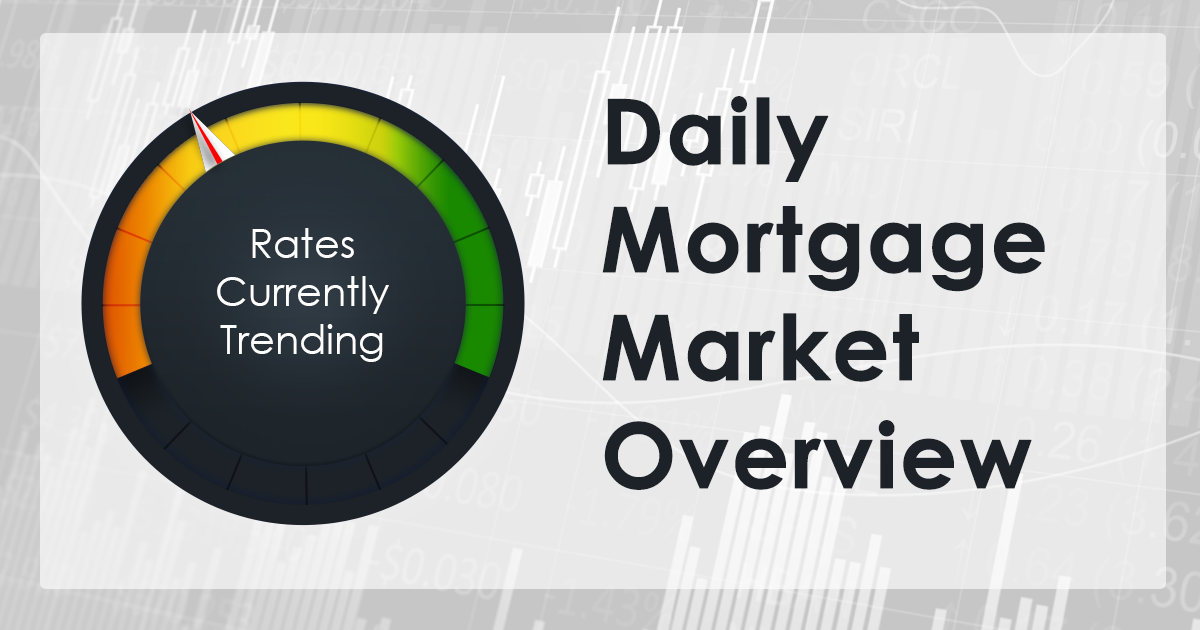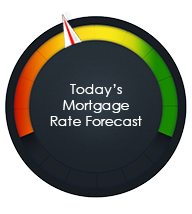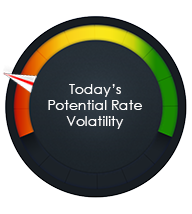
What to look for as the Fed likely increases rates
___
Published Date 3/21/2018



Today's Mortgage Rate Summary
How Rates Move:
Conventional and Government (FHA and VA) lenders set their rates based on the pricing of Mortgage-Backed Securities (MBS) which are traded in real time, all day in the bond market. This means rates or loan fees (mortgage pricing) moves throughout the day, being affected by a variety of economic or political events. When MBS pricing goes up, mortgage rates or pricing generally goes down. When they fall, mortgage pricing goes up.
Rates Currently Trending: Neutral
Mortgage rates are moving sideways to slightly higher so far today. The MBS market worsened by -25 bps yesterday. This was enough to worsen mortgage rates or fees. Rates experienced moderate volatility yesterday.
Today's Rate Forecast: Neutral
Housing: Weekly Mortgage Applications dropped by -1.1% led by a decline of -5.0% in refinance applications. Purchase applications were actually up by 1.0%. This is the second straight week where refinance applications were down, and the purchase applications were up. February Existing Home Sales came in at 5.54M vs est of 5.40M units on an annualized basis. Inventories remain an issue, coming in at an all-time low.
Fed: It's finally here, the big day where most likely the FOMC will make their first rate hike of 2018. But today really isn't about the rate hike (unless there is no rate hike), it's about the path of rate hikes in the future and it's about long bond traders changing their hedges towards that pace of future rate hikes.
The first thing to understand is that Fed needs to get back to a "neutral" rate because the economyand financial system is no longer in a place that needs emergency measures and support. A "neutral" rate means that their Fed Fund Rate is neither too high to slow down growth nor too low to spur the economy on at too fast of a pace. The Fed Funds Rate is well below a "neutral" level which is never good for the financial system. A "neutral" rate is one that is adjusted for inflation. So, if longer-term inflation is expected to be 2.00%, then the Fed Fund Rate needs to get from its current 1.50% level up to the 2.00% level. However, 2.00% is actually too low when other things are considered, members of the Fed have said that a "neutral" rate is actually closer to 2.5% to 2.8%.
The way this chart works is that we look for the largest grouping of dots for a specific year. This represents the largest grouping of FOMC Members (both voting and nonvoting....it would be more valuable if it was only voting members) and where they are projecting the Fed Fund Rate to be at the end of each year. The last time that this was released (December, the largest grouping is in that 2.25% to 2.50% range.
Next, you need to understand that while the FOMC has 8 meetings in a year, only 4 of them come with a live press conference with the Fed Chair. Right or wrong, the markets think that a rate hike can ONLY come at a meeting with a live press conference. Of course, the Fed can raise rates at any meeting and in fact, have actually made rate changes in between meetings in the past.
So, IF the Fed Fund rate is going to get to 2.5% by the end of 2018, AND the current rate is 1.50%, THEN that means there has to be 4 rate hikes of 0.25% and they will come at the 4 meetings that the Fed has a live press conference (March, June, Sept, and Dec).
Now you fully understand what the markets feel is the path of rate hikes. However, there are issues with this. The Fed could hike at 0.5% and then 0.375% and then 0.25% or any combination thereof at each of the 4 meetings with press conferences. They could even hike 0.25% at each of the next 4 meetings instead of waiting for the 4 meetings with live press conferences. And depending on the economy and inflation rates, they may change their projections and hike fewer or more times than their "dot plot" chart communicates to the markets.
Great Britain: Unemployment Rate 4.3% vs est of 4.4%, Average Wages up 2.8% vs est of 2.6%.
Today's Potential Rate Volatility: High
Mortgage rates could really make a move today with a good deal of volatility. As noted above, if the Fed increases rates, which the market is expecting, and everything else is in line with expectations, rates should stay relatively flat. However, if the "dot plot" chart or anything else is significantly different than expectations, rates could make a move.
Bottom Line:
If you are looking for the risks and benefits of locking your interest rate in today or floating your loan rate, contact your mortgage professional to discuss it with them.
Source: TBWSAll information furnished has been forwarded to you and is provided by thetbwsgroup only for informational purposes. Forecasting shall be considered as events which may be expected but not guaranteed. Neither the forwarding party and/or company nor thetbwsgroup assume any responsibility to any person who relies on information or forecasting contained in this report and disclaims all liability in respect to decisions or actions, or lack thereof based on any or all of the contents of this report.
http://nmlsconsumeraccess.org/


Peter Sweeney
Loan Officer
License: NMLS 87705
Lake City Mortgage
1875 N Lakewood Dr #102, Coeur dAlene ID
Office: 208-640-5626
Cell: 208-640-5626

Peter Sweeney
___
Loan Officer
License: NMLS 87705
Cell: 208-640-5626
 Lake City Mortgage
Lake City Mortgage